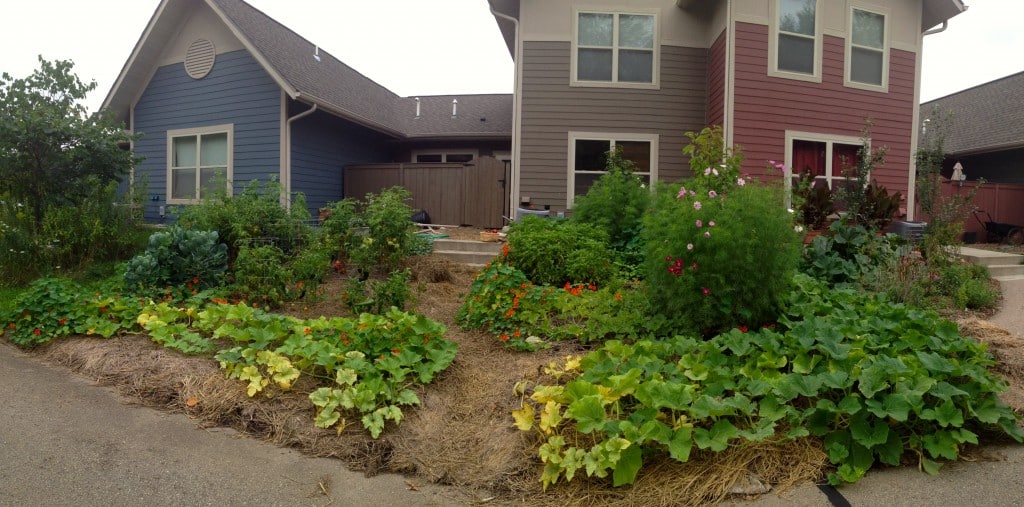This article, by Charles Eisenstein, discusses the issue of whether organic methods and permaculture can feed the world. It cites this article, by David Blume, who claims to have achieved yields that can, in fact, feed the world. In other words, his yields increase the carrying capacity of the land to the point where we can live on the planet with 10-11 billion people. Dramatic stuff. Is it true?
Here are some interesting claims made by David Blume:
- You can produce enough food to feed a household in a 50-foot radius around the house
- “With a polyculture, yields of 3-10 pounds of food per square foot are easy to come up with in most climates.” Active people eat about 2 lbs of food per day. So, you need 500 square feet per person maximum (with a “good but sloppy design”), 200 square feet with a really good design.
For a very detailed analysis of this issue in relation to corn, see Mark Shepard’s excellent permaculture book, Restoration Agriculture.
For an interesting discussion of sustainable meat, see this article from Joel Salatin of Polyface Farms. For an interesting article describing one person’s journey from omnivore to vegan to freegan to meat-eater again, read this article.
According to Geoff Lawton, permaculture can grow the same amount of food as industrial agriculture using 4-6% of the land area (Geoff Lawton, Q&A: Scientific Research & Permaculture, source).
Not only food, but fuel (more here at David Blume’s website, permaculture.com): “In a designed system, especially a permaculturally-designed system, we could increase the biomass produced by an order of magnitude and in so doing supply all our needs in a much smaller footprint. For instance, you only get about 200 gallons per acre of alcohol fuel from corn, but 1000 gallons from sugar beets, 1200 from Jerusalem Artichokes, 1500 gallons from annual sugar cane in southern states and a variety of other crops which, when properly designed for climate, might yield 2500 gallons per year from two crop cycles. This would be done while increasing soil fertility and providing all the animal food we need as a by-product (replacing the corn which largely goes for animal feed now) at a fraction of the energy cost of corn-soybean agribusiness. This is all possible right now without any new technology.” David Blume also has a business producing distillery equipment for local alcohol production for fuel.

Pingback: Levels of Resilience | One Planet Thriving
Pingback: Wild Rice in Wisconsin | One Planet Thriving